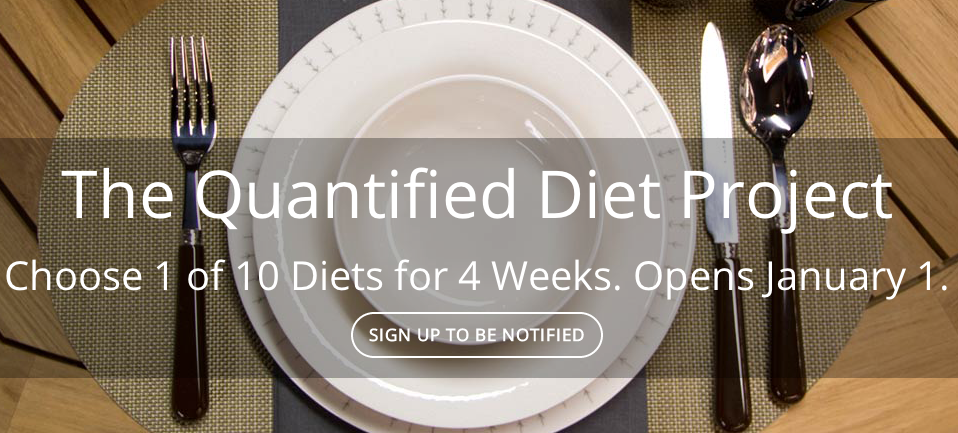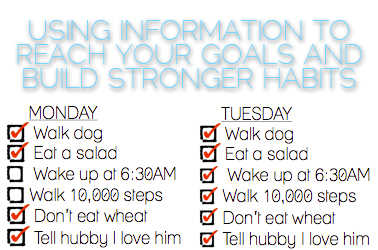Three things that have been big for me this year are LiftApp, data, and food. You’ve seen me talk about LiftApp several times. It’s been really helpful in tracking my progress on goals. Recently, when I was feeling bummed about not being great about reading my Bible daily which was one of my goals for the year. I checked out my stats on Lift and realized that I had read it almost 300 days in the year. The Data helped me realize that I had done better over the course of the whole year than in the last few months, which was encouraging. I’ve been trying to be more mindful about real information this year. The facts (like the previous example) help me see where I’m at objectively rather than based on my feelings. This year, I also gained a stack of weight due to my love of food and my lack of discipline in exercise and running.
In the new year, Lift is combining diet and data doing “the largest randomized trial of popular diet.” It has two aims:
#1. Help one million people make a healthy diet change leading to: weight loss, overall health, and/or more energy. We’re providing 10 popular diets with expert advice.
#2. Perform the largest-ever measurement of popular diets. What works? How do popular diets compare? How can we all be more successful? We’re working with UC Berkeley on the science and the analysis.
People have the option of adjusting their diets to follow any of the following 10 diets (including the option of being given a random diet to follow):
- Paleo: eat like a caveman, mostly veggies, meats, nuts. Advised byPaleohacks and Nerd Fitness.
- Slow-Carb: lean meat, beans, and veggies; abstain from white foods like sugar, pasta, bread, cheese. Based on Tim Ferriss’s 4-Hour Body.
- Vegetarian: vegetables, but no meat. Cheese and eggs are optional. Advised by No Meat Athlete.
- Whole foods: eat only recognizable foods and avoid processed ones. Advised by Summer Tomato.
- Gluten-free: no wheat, rye, barley or wheat-based foods.
- No sweets: a simple diet change that affects your insulin swings.
- DASH: USDA’s current recomendation.
- Calorie counting: the old standard.
- Sleep more: the science says this should work. Advised by: Swan Sleep Solutions.
- Mindful eating: learn mindfulness to recognize when you’re full. Advised by ZenHabits and the Center for Mindful Eating.
When I first heard about this a few weeks ago, I was really interested in the idea, just none of the diets. Well, you know I’m already doing #5 and #6, so I thought there was no real way for me to participate in this. Recently I was listening to a Micheal Hyatt podcast (I forget which one!) and he was talking about how helpful it was for him to start tracking his calorie intake in order to understand whether he was exercising enough. I’ve always been wary of counting calories because it can become a type of eating disorder, but I also have to face the fact that I just eat anything and everything whenever I want. I have zero data about what I’m putting in my body versus how I’m spending that energy (watching Bones on Netflix, these days).
So I tried MyFitnessPal for a few days to count my calories and it was eye opening. I was sometimes 1,000 or 1,500 calories over what I should be consuming based on my activity level! I was reminded of the story from The Power of Habit that talked about those who started tracking what they were eating, it became a Keystone Habit in that they suddenly became aware of what was going into their bodies, but then they also became aware of how they were exercising and spending their money. Their whole lives turned around because of being mindful of this one thing. (Random fact: this article on Keystone Habits is the most visited post of mine via Google).
I’ve decided I’m going to participate in the study doing #8: monitoring my calories. I want to invite you to join me on “the largest randomized trial of popular diet.” All you need is to sign up here and download Lift to your phone (or use it on your browser), or read more about The Quantified Diet.


